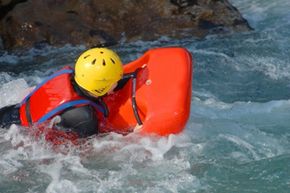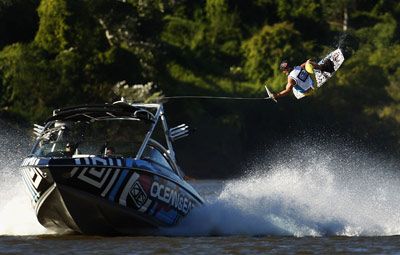For thrill seekers looking to get close to the action, you can't get much closer than inside the action. If you like hydrospeeding, you want to find yourself right in the flow of the billowing, frothy rapids of Mother Nature's rivers.
Hydrospeeders ride torso-length boards through rapids. The sport came into being in the 1970s, when a man named Robert Carlson opened a rafting gear business on the West Coast of the U.S. and started teaching water rescue classes. When the boards used kept flipping out under the riders, Carlson developed a new board, the Carlson Riverboard. However, river guides had other plans and started riding them for fun. With this, riverboarding was born.
Advertisement
At the same time, a group of guides in the French Alps had a similar idea and developed their own boards called hydrospeeds, which is where the name hydrospeeding comes from. Whitewater athletes in New Zealand also got in on the action and developed their own version, the sledge.
Regardless of what you call it, this sport is garnering fans worldwide, as illustrated by the guide companies dotting the globe. Guided tours are available to match your level of experience and provide instruction. And if it sounds enticing to ride large rapids, you're not alone in your opinion. Hydrospeeding has a hold on about one-third of whitewater sports activity in Europe and is gaining favor in the United States. In fact, the United States Riverboarding Association was established in 2005, and global competitions are growing in popularity, including in the United States.
Before you go scout out a river, though, it doesn't hurt to do some research. Here, you'll learn the physics behind the sport, tips and safety measures. Let's get started with how the board and river work together to give you one wild ride.
Advertisement


